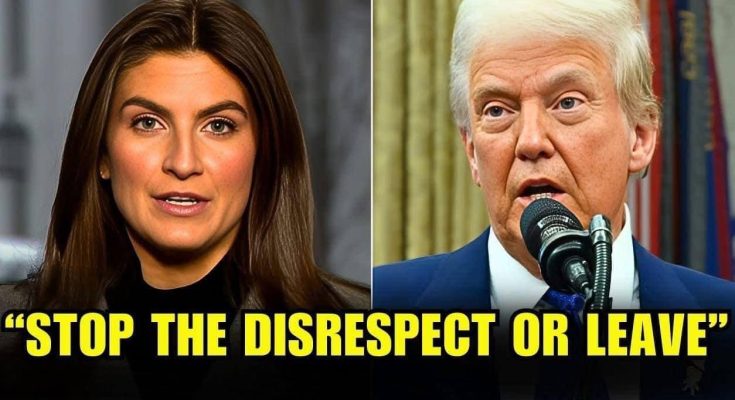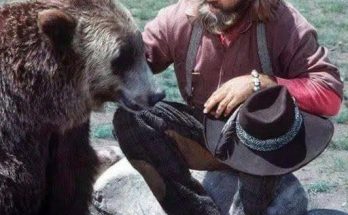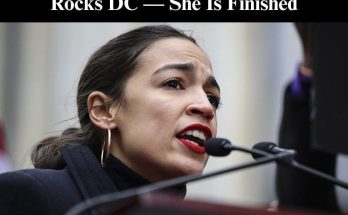During a contentious press conference in the Oval Office, President Donald Trump engaged in a fraught and confrontational dialogue with CNN anchor Kaitlan Collins, accusing her of partiality and questioning her integrity in front of numerous reporters.
The exchange escalated rapidly, capturing media attention and intensifying the ongoing conflict between Trump and the press, especially CNN. The incident began when Collins inquired whether Trump had faith in Russian President Vladimir Putin. Given the persistent controversies regarding Trump’s ties to Russia, the question was particularly charged, and Collins was intent on obtaining a clear response.
Initially, Trump replied with caution, stating, ‘I think he would like to see something happen.’ However, his demeanor quickly changed as Collins sought further clarification. Interrupting her mid-sentence, Trump transformed the discussion into a personal attack, remarking, ‘I know he [Biden] is a friend of yours,’ suggesting that Collins lacked objectivity and was aligned with his political opponent, Joe Biden.
This accusation appeared to surprise Collins, yet she endeavored to redirect the conversation back to her original inquiry. Nevertheless, Trump was not done. ‘You always ask the same nasty questions,’ he continued, dismissively waving his hand. ‘CNN has no credibility.
Everyone knows you guys are fake news. You spread lies and misinformation daily.’ Collins, recognized for her incisive questioning and determination, promptly retorted, ‘Mr. President, my role is to ask questions. You have not answered mine,’ remaining unfazed by his attack.
Trump, visibly annoyed, leaned forward and countered, ‘You wouldn’t pose these types of questions to Biden. You wouldn’t dare. You’re shielding him. You’re part of the problem.’
Tension filled the room as journalists exchanged knowing looks, anticipating yet another intense confrontation between Trump and the press.
This was not the first instance of Trump directly challenging Collins—she had been excluded from a White House event in 2018 for persistently questioning him—but the atmosphere was particularly charged this time, underscoring the increased political significance as the 2024 election approached. Collins made another attempt to assert her position, calmly stating, ‘Mr. President, I’m inquiring about your views on Putin, not on Joe Biden.’
However, Trump was unyielding. ‘That’s precisely my point,’ he replied. ‘You feign neutrality, but your intent is to attack me. I recognize what is occurring, and so does everyone else.’
At this juncture, other journalists present in the room began to murmur. Some tried to redirect the discussion towards policy matters, yet Trump remained fixated on Collins. He subsequently shifted to his well-known criticisms of CNN, labeling the network as ‘a disgrace’ and implying that they were ‘losing viewers due to public fatigue with their falsehoods.’
The exchange between Trump and Collins persisted for several minutes until a White House staff member intervened, attempting to transition to another reporter. Nevertheless, the confrontation had already made a significant impact.
Within moments, clips of the interaction inundated social media, eliciting responses from both Trump supporters and opponents. His base praised his confrontation of what they perceived as a ‘biased liberal journalist,’ while media watchdogs and Trump’s critics condemned him for his ongoing antagonism towards the press.
CNN promptly addressed the altercation, issuing a statement in defense of Collins. ‘Kaitlan Collins is a respected journalist whose role is to pose challenging yet fair inquiries to those in positions of power.
The American public deserves transparency and accountability, not unfounded assaults on the free press.’As the aftermath of the press conference unfolded, it became evident that this moment would have enduring consequences. For Trump, it solidified his position among supporters who perceive the media as an opponent.
For Collins, it represented yet another challenge of perseverance in a career dedicated to traversing the turbulent realm of political journalism. Furthermore, for the media landscape overall, it served as yet another indication of the profound divisions and contentious dynamics that characterize the relationship between the press and the presidency in contemporary American politics.



